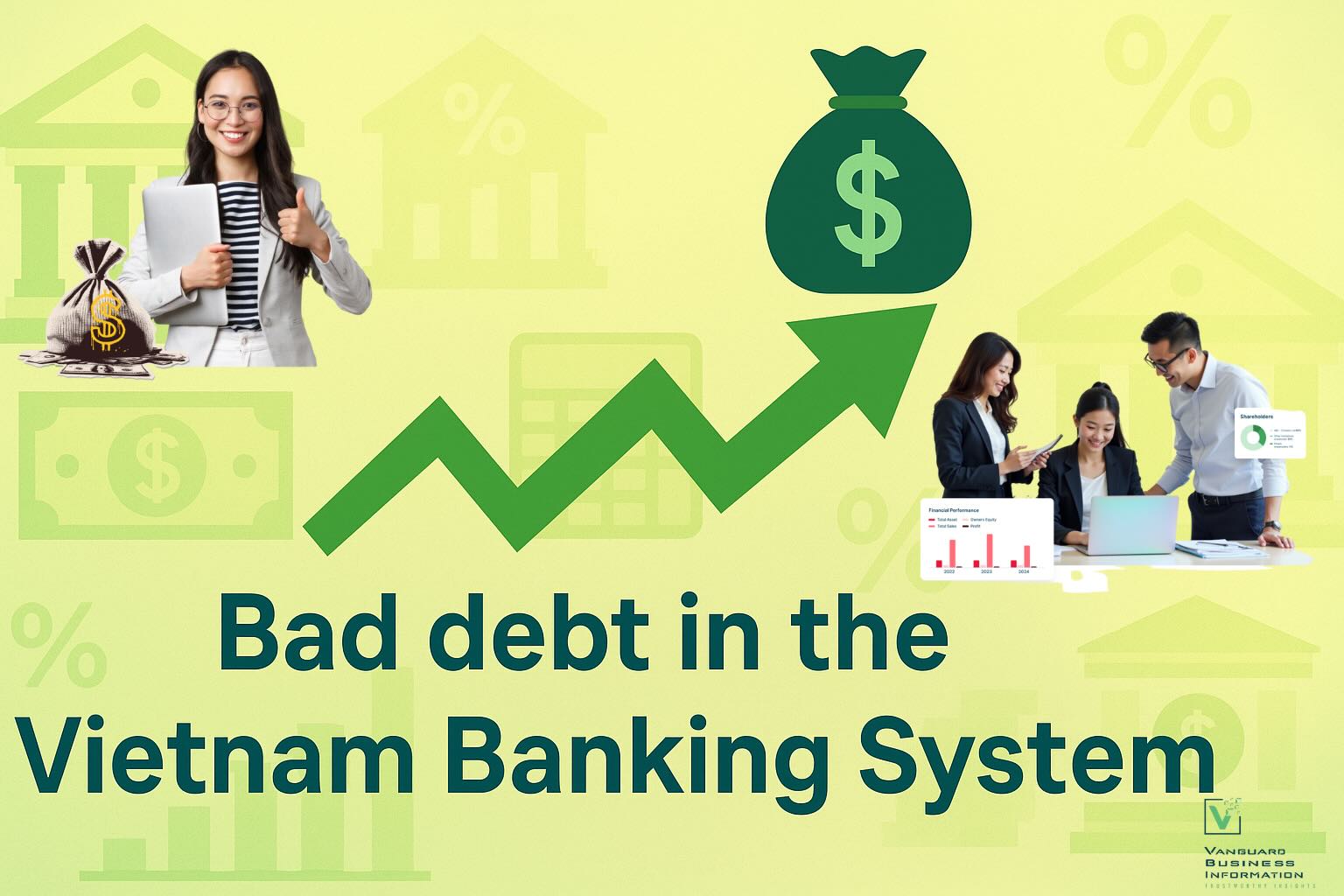Published Nov 2025
Bad Debt in Vietnam’s Banking System: A Dual Reality of Progress and Hidden Risks
Vietnam’s banking sector stands at a crossroads, with a complex reality hidden beneath its low non-performing loan ratios. Bad debt has climbed to record levels, rising faster than credit growth, and insiders quietly warn that the true risks may run deeper than the numbers reveal. This article examines the divergence, hidden pressures, and policy responses shaping Vietnam’s financial system as it navigates its most delicate phase in a decade.

As of the end of Q3/2025, Vietnam’s banking sector presents a complex and diverging picture. On one hand, major banks continue to show strength in asset quality and profitability. On the other hand, system-wide bad debt (non-performing loans, NPLs) has surged to record levels, prompting warnings from some banking experts who say the situation is more serious than publicly acknowledged.
Record Bad Debt Figures
Data published on November 11, 2025, indicates that the total stock of bad loans (groups 3–5) across 27 listed banks reached VND 274.05 trillion, an increase of 19.1% over the nine months ending in September, marking the highest level ever recorded. Further details:
- 24 out of the 27 banks covered saw an increase in their absolute bad-debt volume; 19 banks experienced double-digit percentage increases.
- While the headline NPL ratio slipped marginally to 2.01%, some analysts argue this masks a growing concentration of bad loans at weaker banks and rising Group 5 (irrecoverable) debt, which accounted for over 50% of the total.
- Meanwhile, average coverage of bad debt (provisions divided by NPLs) fell to around 84%, down six percentage points from the start of the year.
These figures suggest that, although much of the risk remains concentrated in a subset of banks, the burden of risk is increasing and shifting, not easing.
Divergence Between Large and Small Institutions
The divergence in asset quality across the system is stark:
- Large, well-capitalised banks have posted low NPL ratios: e.g., some have NPLs of just around 1.0-1.2%. They benefit from broad, diversified portfolios, stronger governance, and greater access to recovery tools.
- Smaller and mid-sized banks, however, are bearing the brunt of new problem loans. Rising defaults, weaker provisioning buffers, and reliance on riskier segments such as real estate are conspiring to push their bad-loan ratios higher.
This split is underscored by recent research showing that NPL formation continues, especially among less resilientbanks. One anonymous banking expert commented: “The big banks may look fine, but the cracks are widening below the surface.”
Profitability and Credit Growth vs Margin Pressure
Credit growth in 2025 remains acceptable. According to sector data:
- Many banks are seeing loan growth rates of 12–19%, in line with targets set by regulators.
- Income from fee-based services is also improving for many banks, providing diversification away from pure interest income.
However, there are headwinds:
- Net Interest Margin (NIM), a key profitability metric, has declined to 3.15%, its lowest level since 2019.
- Higher funding costs and slower pass-through of those costs to customers increasingly challenge the placement of new loans.
The result: banks may grow their portfolios, but their profit cushions are under pressure, at the same time when undetected bad loans mount.
Why Some Experts Say “The Truth Is Worse”
Several banking insiders believe publicly reported figures may underestimate underlying risks for these reasons:
- Hidden problem loans: Some debt may not yet be classified as NPLs (group 2 or controlled restructurings) and could become problematic soon.
- Collateral realisation is slow: Recovery of defaulted loans depends on selling assets, legal enforcement, and market conditions — all of which are subject to delays.
- Coverage ratios eroding: Lower provisioning means less buffer to absorb future losses. As we saw, overall coverage has declined.
- Concentration risk: Smaller banks with limited scale face bigger shocks if major borrowers default, particularly in real estate and corporate credit.
In other words, the official NPL ratio may be static or improving at the surface, but the latent risk and potential for acceleration in bad loans remain meaningful.
Regulatory and Structural Reforms: Progress but Not a Cure
On the regulatory front:
- The revised Law on Credit Institutions 2025, effective from 15 October, enhances NBH (State Bank) powers, strengthens bad-debt transfer mechanisms, and enshrines parts of Resolution 42 into law.
- The SBV's 2021-25 banking restructuring scheme remains in force, targeting system-wide consolidation, better governance, and bad-debt resolution.
- Liquidity and depositor risks are being addressed through various measures.
These are essential steps. Yet reforms take time to play out and cannot immediately repair decades-long structural issues. Real estate pricing, corporate debt exposures, and funding dynamics still link back to the earlier credit cycle — so the tail risk remains.
What Comes Next: Key Signals to Watch
Stakeholders—investors, credit officers, regulators—should monitor:
- NPL stock and composition: Not just the ratio, but whether bad loans in groups 4–5 are increasing.
- Coverage ratio trends: Falling coverage is a warning, even if NPL ratios appear low.
- New loan growth in high-risk sectors: real estate, leveraged corporate lending, and other under-pressure industries.
- Recovery & clearance rates: How quickly banks are realising collateral, selling assets, and cleaning books.
- Margin trends: Continued NIM compression will reduce buffers for absorbing losses.
- Smaller banks’ resilience: Institutions without scale may be more vulnerable when shocks hit.
Balanced Outlook: Progress with Caution
Yes, there are positive signs. Some banks are effectively managing bad debt, and credit growth remains strong. The regulatory framework is more robust than before. However, the data also reveal a sobering reality: bad debt is at record highs, and the risks are increasingly shifting toward institutions less capable of absorbing them.
Therefore, while the system is not in crisis, the path forward is not a straightforward recovery. It involves stabilization with caution, and success will depend on how effectively banks can resolve legacy bad loans, prevent new ones, and maintain margins even as credit grows.
In short, Vietnam’s banking sector is better positioned than in previous cycles, but believing that the bad-debt problem is “behind us” would be premature. The real test lies ahead, and disciplined lending, strong provisioning, and transparent resolution will determine whether this cycle concludes successfully or leaves unresolved vulnerabilities for the next downturn.















